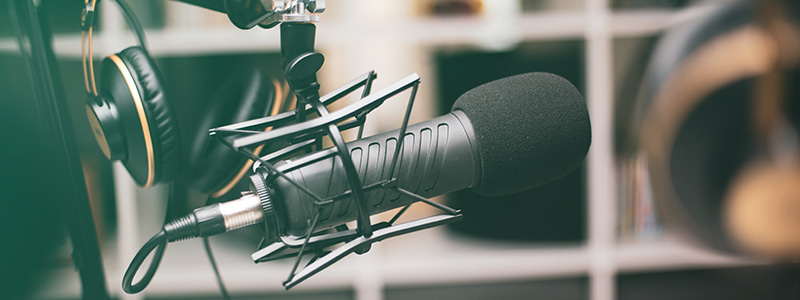
Top 5 Tips for Purchasing Your First Mic
So, you’ve decided to take the plunge and buy your first microphone? You can practically hear the sweet sounds emanating from that magical piece of machinery. But before you dive in and bring that baby home, do yourself a favor and check out these top 5 tips for purchasing your first mic.
1. Dynamic or condenser mic?
To answer that question, you should first consider what kind of recording you intend to create and also know the difference between the two.
- A dynamic microphone is a more durable unit that can handle louder instruments and won’t pick up as much detail as a condenser mic. If you’re recording at low to mid frequencies and need a mic that works well with electric guitar amps or drum kits, the more affordable dynamic mic might be perfect for your needs.
- A condenser microphone can produce a stronger audio signal, which makes this the better option for recording sources at a higher frequency that isn’t too loud. This more sensitive option is ideal for recording acoustic instruments and vocals.A condenser microphone typically comes with audio interfaces that have phantom power capability.
2. Speaking of power
Depending on where you plan to use your mic, you need to consider your power source. If you choose a condenser mic, you’ll need to connect it to an external power source,also referred to as a phantom power source. Dynamic mics, on the other hand, work like speakers in reverse, converting electrical signals into sound. So, no external power source is required.
3. Proximity effect sensitivity
If you’ll be working in the podcast space or with vocalists who may not stay in the same spot in front of the mic, you may want to consider a mic with a higher proximity effect sensitivity. This means that whether your source is 4 or 14 inches away from the mic, you’ll still get a good result. This feature is especially useful in radio production or for voiceover work.
4. Pickup pattern/ directionality
How a microphone picks up sound around it is called directionality. You can choose from 4 types of pickup patterns based on what your typical recording environment requires.
- Omnidirectional– If you’re recording in groups or crowds and need to pick up sound from all directions, then you’ll want a mic with an omnidirectional pickup pattern. They aren’t so good for live use because they can generate a lot of feedback.
- Bi-directional– Perfect for the podcaster, this mic picks up sound from the front and back in a figure eight polar pattern.
- Cardioid– Cardio for its heart-shaped pickup pattern, this mic picks up sounds mostly from the front and some from the sides. This mic is the most commonly used when recording music.
- Supercardioid– Ideal for capturing single sound sources in loud environments, this mic offers some pickup directly at the rear and is resistant to feedback. It also has a narrower pickup pattern that minimizes ambient sound.
5. Frequency Responsiveness
The range of frequencies a microphone can detect is usually 20hz to 20Khz, so choosing a mic that is responsive to the frequencies thatyou’ll be working with is pretty important.
Educate yourself first on what kind of mic is going to serve your particular purpose. Don’t be afraid to ask around to find out what some of the more experienced folks in the industry have to say!If you’d like to learn more about a career in the recording industry, then check out the programs at International College of Broadcasting(ICB). With programs in Broadcasting, Multimedia Production and Audio Engineering, ICB is training the next generation of recording and broadcasting professionals. Contact us today to learn more or to schedule a campus tour.

